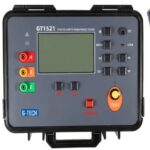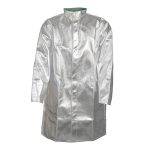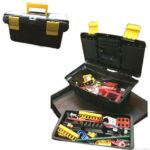Your list is empty, add products to the list to send a request
What Is the Main Function of a Smoke Detector?

04
May
In the realm of fire safety, smoke detectors are indispensable devices that serve as the first line of defense against potential fire hazards. Their primary function is to detect the presence of smoke, providing early warnings that can save lives and protect property. This comprehensive guide delves into the core functions of smoke detectors, their types, operational mechanisms, and their critical role in safeguarding both residential and commercial spaces.
Understanding the Core Function of Smoke Detectors
At their essence, smoke detectors are designed to sense smoke particles in the air, signaling the potential onset of a fire. Upon detection, they emit a loud alarm, alerting occupants to evacuate and take necessary actions. This early warning is crucial, as it provides valuable time to escape and minimizes the risk of injury or death.
Types of Smoke Detectors and Their Mechanisms
Smoke detectors primarily operate using two detection methods: ionization and photoelectric.
Ionization Smoke Detectors
These detectors are highly responsive to flaming fires. They contain a small amount of radioactive material between two electrically charged plates, which ionizes the air and creates a current. When smoke enters the chamber, it disrupts this current, triggering the alarm.
Photoelectric Smoke Detectors
Photoelectric detectors are more sensitive to smoldering fires. They use a light source and a light sensor positioned at an angle. In the absence of smoke, the light passes in a straight line. When smoke enters the chamber, it scatters the light, directing it toward the sensor and activating the alarm.
Dual-Sensor Smoke Detectors
Combining both ionization and photoelectric technologies, dual-sensor detectors provide comprehensive coverage, ensuring prompt detection of various fire types.
Importance of Smoke Detectors in Fire Safety
Early Detection Saves Lives
Smoke detectors provide critical early warnings, allowing occupants to evacuate before a fire escalates. According to the National Fire Protection Association, having working smoke alarms in your home cuts your risk of dying in a fire by 55%.
Property Protection
By alerting occupants early, smoke detectors help in minimizing property damage. Prompt evacuation and swift response from emergency services can prevent extensive losses.
Compliance with Safety Regulations
In many regions, installing smoke detectors is a legal requirement in residential and commercial buildings. Compliance ensures not only safety but also adherence to building codes and insurance policies.
Placement and Maintenance of Smoke Detectors
Optimal Placement
- Install smoke detectors inside each bedroom, outside each sleeping area, and on every level of the home, including the basement.
- Place detectors on the ceiling or high on the wall, as smoke rises.
- Avoid installing near windows, doors, or ducts where drafts might interfere with their operation.
Regular Maintenance
- Test smoke detectors monthly by pressing the test button.
- Replace batteries at least once a year, or when the detector chirps, indicating low battery.
- Clean detectors regularly to remove dust and cobwebs.
- Replace the entire smoke detector unit every 10 years or as recommended by the manufacturer.
Advanced Features in Modern Smoke Detectors
Modern smoke detectors come equipped with advanced features to enhance safety and convenience:
- Interconnectivity: When one detector senses smoke, all interconnected alarms sound, ensuring the alert reaches all areas.
- Smart Technology: Integration with smart home systems allows for remote monitoring and alerts via smartphones.
- Combination Detectors: Some models detect both smoke and carbon monoxide, providing dual protection.
Firesupplies: Your Trusted Partner in Fire Safety
At Firesupplies, we are committed to providing top-quality fire safety products to ensure the well-being of our clients. Our range includes the Edward SIGA-OSD SIGA-SB Addressable Smoke Detector with Base, a reliable choice for both residential and commercial applications. This detector offers advanced sensing technology, ensuring prompt detection and response to fire incidents.
Frequently Asked Questions
1. Why do we need a smoke detector?
A: Smoke detectors are essential for early fire detection, providing critical time to evacuate and call emergency services. They significantly reduce the risk of injury or death during a fire.
2. What is the function of smoke control?
A: Smoke control systems manage the movement of smoke within a building during a fire, maintaining clear escape routes and assisting firefighting efforts. They help in delaying or preventing flashover, thereby reducing the risk of fire escalation.
3. What detects smoke in a smoke detector?
a:Smoke detectors use either ionization or photoelectric sensors to detect smoke particles in the air. Ionization detectors are more responsive to flaming fires, while photoelectric detectors are better at detecting smoldering fires.
Enhance Your Fire Safety Measures Today
Investing in reliable smoke detectors is a crucial step toward ensuring the safety of your home or business. Explore our range of high-quality fire safety products at Firesupplies and take proactive measures to protect what matters most.



























